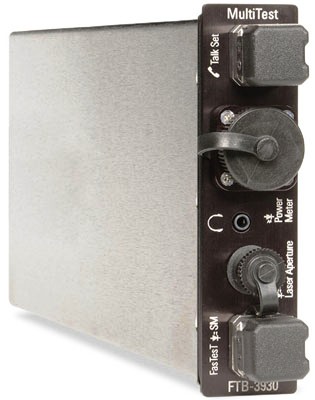
|
|
The Exfo FTB-3932 MultiTest Module, Ge detector, dual-wavelength 1310/1550 nm loss tester, perfect for estimating loss budgets. Integrate your choice of power meter and light source, exclusive FasTesT automated loss test set, ORL tester, visual fault locator (VFL), and digital talk set. New features include: FTTx-mode display (1550 nm downstream, 1310 nm upstream), remote referencing and saving, as well as new measurement distance units (feet and kilofeet). Specifications. Detector type: Ge. Measurement range: 10 to -70 dBm. Uncertainty: ± 5% ± 0.1 nW. Wavelength range: 800 to 1650 nm. Display Resolution: 0.01 dB. Calibrated wavelengths: 40. Automatic offset nulling: Yes. Measurement-distance units: kilometers, meters, kilofeet, feet, miles. Source Wavelengths (Standard): 1310 ± 20, 1550 ± 20. Loss range: 60 dB.
|